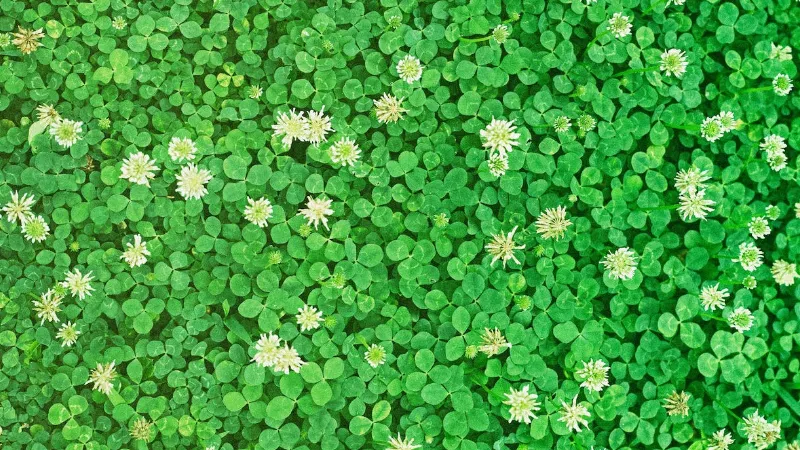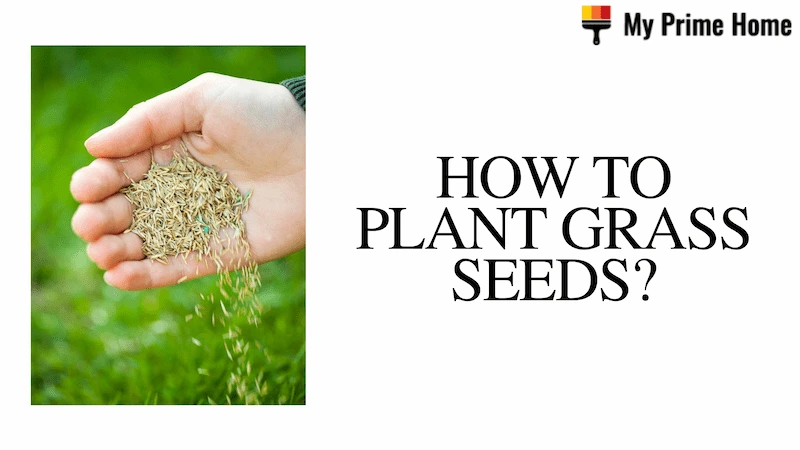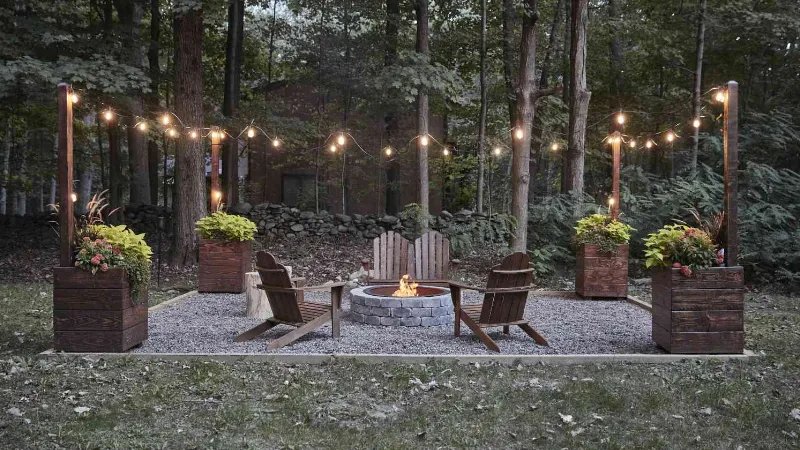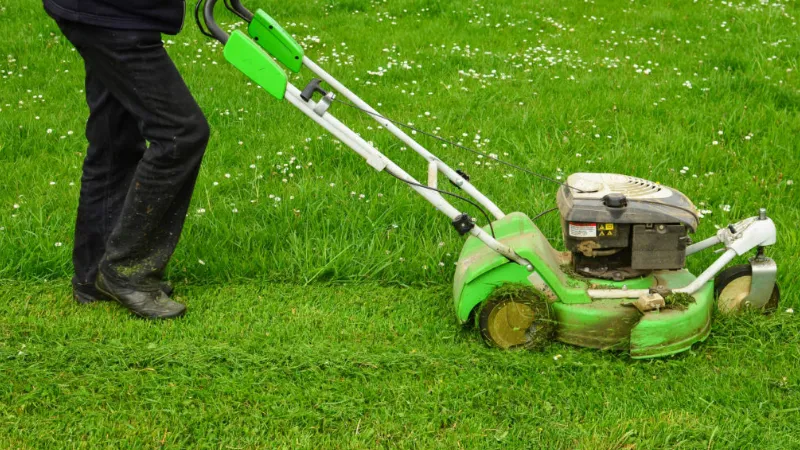Why a clover lawn is better than a grass lawn? There are 17 good things about having an emerald lawn. Below will show you a full explanation of clover lwan to help you to understand why a clover lawn is better than a grass lawn.
Clover lawn requires less water, handles low fertility soils, rarely has to be mowed, attracts pollinating insects, requires no fertilization, and grows in poor soil…Please read on for more detailed information.
What is Clover?
Clover is a dense ground cover known for its shamrock-shaped leaves and pollinator-friendly flowers. It originated in the Mediterranean but was brought to America in the 1600s, where it quickly won over farmers as a favorite cover crop and livestock forage. Clover then rose to prominence as a lawn plant before being demonized as a weed.
Clover has a secret superpower: It can fix nitrogen for other plants (and itself), providing a natural boost of fertilizer. Because of its nitrogen-fixing abilities, clover is considered a living mulch. It’s a legume, in the same family as peas, peanuts, and beans.
With over 300 species available, clover grows worldwide. It is most prevalent in the Northeast, Northwest, and Midwest of the United States, which are cooler areas. We’ll focus on the three varieties gaining popularity in cool-season lawns: white clover (Trifolium repens, Trifolium pratense, and microclover (Trifolium repens var. ‘Pirouette and Pipolina).
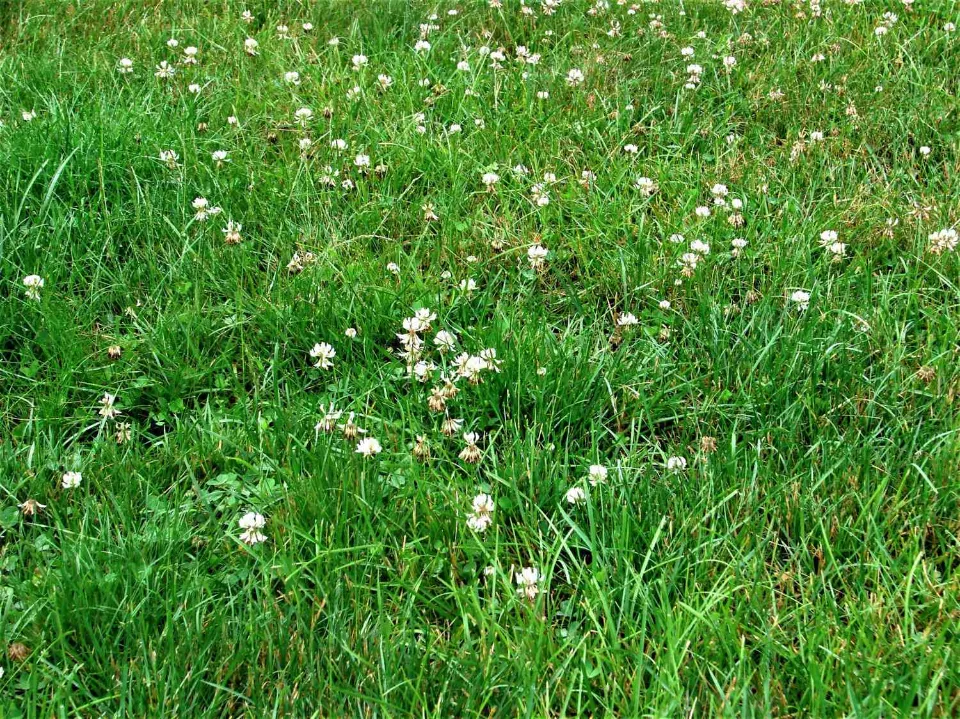
Why a Clover Lawn is Better Than a Grass Lawn?
Here are the top reasons:
Requires Less Water
The deep root system of clover increases drought tolerance while allowing plants to access larger volumes of water. Turf grass lawns typically need at least one inch of water per week.
Very Little Mowing
Clover doesn’t typically require mowing unless you want to remove the flowers to reduce bees or stop them from going to seed because it stays shorter than common turfgrasses.
Inexpensive
Clover seed is cheap. You only need a quarter-pound of Dutch white clover seed for 1,000 square feet of lawn, and a pound of seed costs only $12.95 in its online store. (Prices and recommended quantities of seed per square foot vary among sources.) You will also spend a lot less on water, products, and maintenance. And for those who have long been fighting clover: Give up, let it grow, and you can have it for nothing. Grass and clover can live in harmony.
Handles Low Fertility Soils
A specific type of bacteria is present in nodules on the roots of the clover plant. An ongoing trickle of nitrogen is produced by these bacteria, which absorb atmospheric nitrogen and convert it into plant-useable ammonia.
To develop your lawn maintenance strategy, learn how to identify crabgrass. Below will give you a full explanation of what is crabgrass.
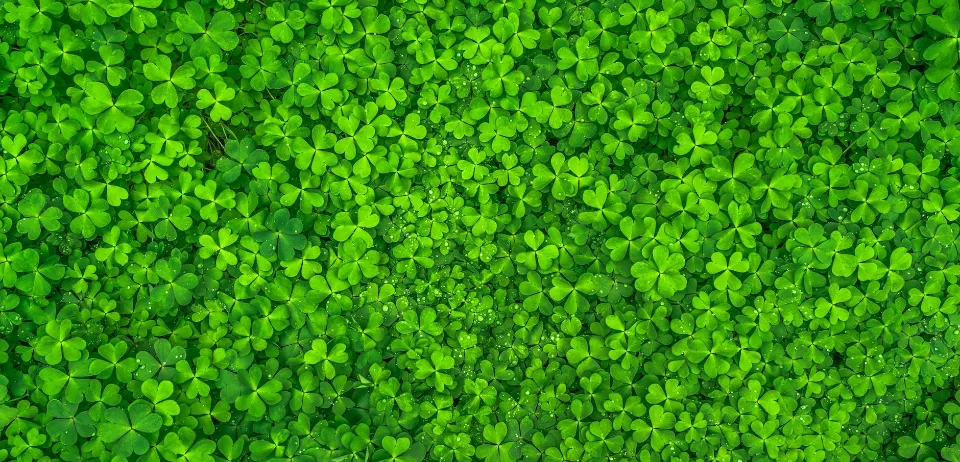
Clover Rarely Has to Be Mowed
You don’t need to mow a clover lawn as frequently or at all, which is one of the main benefits of choosing it over a grass lawn. The majority of clover only reaches heights of a few inches. Without your assistance, it will naturally maintain a fairly even height. But it’s not just more convenient, but it’s easier on the environment as well.
The truth is that gas-powered lawn mowers are not governed by the same pollution regulations as gas-powered vehicles. As a result, the average lawn mower, mile for mile, pollutes as much as 43 new cars according to the EPA. Although most electricity comes from fossil fuels, which are polluting, electric mowers don’t directly cause pollution. The less you have to mow, the better!
Cheap to Grow
Clover seed is cheaper than grass seed, especially if you grow dutch white clover (microclover is more expensive). A clover lawn also requires less maintenance because you don’t need to fertilize or aerate it. But, How Long Does Grass Seed Last?
Requires No Fertilization
Because clover is a legume, it absorbs nitrogen from the air and releases it into the soil as a helpful fertilizer. Clover will help fertilize an existing lawn and enhance the soil’s quality if it is added to one; it doesn’t need any additional fertilizer on its own.
Attracts Pollinating Insects
Those blooms bring bees, and heaven knows the bees need our help. Honeybees love clover (does “clover blossom honey” ring a bell?). A helpful aid is to plant clover. It will also draw parasitoid wasps, which sounds scary but are actually good guys that hunt down harmful bugs.
Doesn’t Need Pesticides
Hurray! There’s yet another good reason not to saturate the soil with harmful insecticides because clover also resists insect pests. This happens because diseases and pests are frequently drawn to nitrogen-rich fertilizers in the first place, but clover doesn’t require those fertilizers (after all, it fixes nitrogen), so those pests don’t find it nearly as attractive.
No Herbicide Required
A clover lawn eliminates the majority of weeds, so you don’t need to use weed killers on it. As a result, you are spending less on upkeep while lowering human exposure and environmental impacts.
No Aeration Required
Clover’s deep roots spread through the soil, breaking up clods and hardpans and helping prevent compaction to keep the soil loose. Again, this means less lawn maintenance for homeowners.
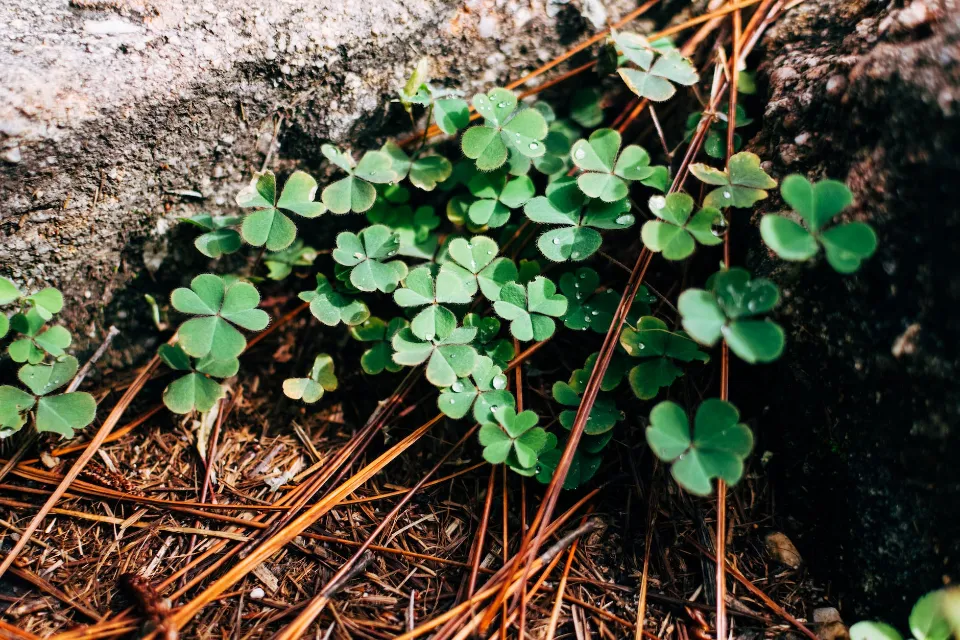
Dog and Pet Friendly
Clover is resistant to pet urine because of its robust root system and won’t develop the typical yellow discoloration or brown spots.
Clover Blooms
Who would prefer a monochromatic carpet of grass when one could have one that was dotted with a flowery starry sky? You can preserve public enjoyment of this lovely flower rug by refraining from mowing during the busiest summer months.
Good for the Bees
In the spring, summer, and fall, the majority of established clover species will bloom. Typically, these flowers are red, purple, or white. Clover produces flowers that draw pollinating insects like honeybees and keep regional pollinators nourished and wholesome.
We are aware that some people have bee allergies, so it might not be a good idea to plant a field of flowers that attract bees in your front yard. Even so, make sure to regularly rake your clover lawn. The best mowers are electric ones because they produce less pollution.
Grows in Poor Soil
The majority of the time, grass is not particularly challenging to grow, but it does require more nutrient-dense soil than clover. Clover adds nitrogen to the soil it grows in, which is something it needs to thrive. It can therefore be planted in relatively poor soil and grow just fine. It also doesn’t require fertilizers to grow as a result.
Discourages Many Lawn Pests
Clover needs fewer chemical pesticides because it tolerates many common insect pests well and rarely encounters aphids or thrips. It also prevents rodents and bunnies from nibbling on delicate flowers.
Stays Green for a More Extended Season Than Grass
Clover will remain green for a longer period of time in the fall because it is more tolerant to cold than turf lawns. In some areas, clover lawns stay green all through the winter if temperatures don’t drop too low.
Can you mow wet grass? Short answer: No. Whether it’s early morning and the lawn is still dewy, a rainstorm just ended, or you just ran your sprinklers, you should skip the mow for now. Please read on for more detailed information.
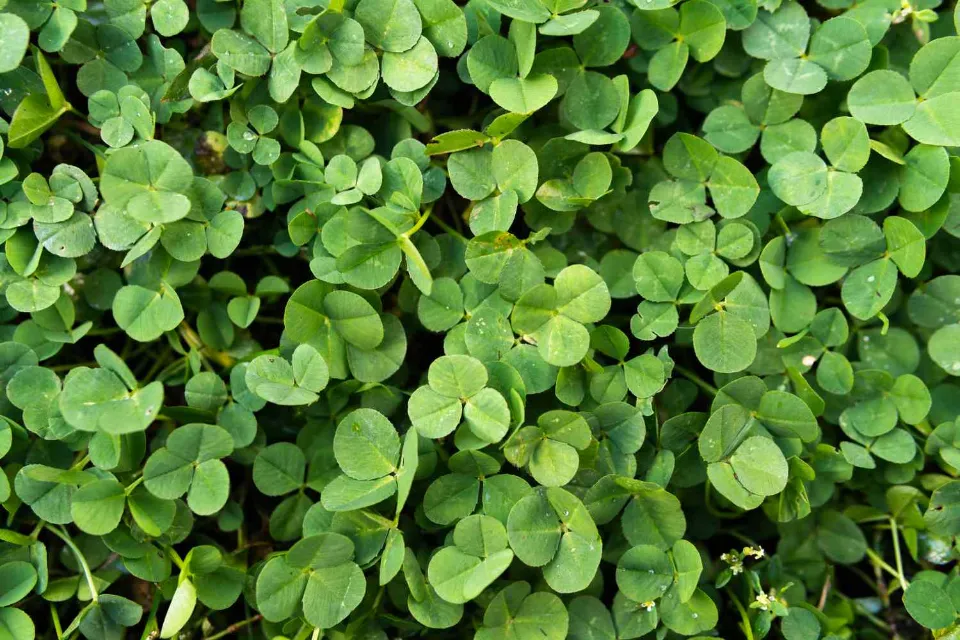
Drawbacks of a Clover Lawn
There are many benefits of clover lawns, but there are some disadvantages too:
- Clover is a short-livedperennial, so pure clover lawns require reseeding every 2–3 years to maintain an even stand.
- Pure clover lawns are not durable enough for high-trafficareas or playing fields.
- Clover attracts bees, which can be hazardous if someone in your household is allergic to bee stings.
- Clovers stain clothingeasier than grass.
- Clover’s roots spread out rapidlyand will quickly get into your garden and flowerbed if not contained.
- A mixed lawn with clover and grass can look patchy, especially when the grass goes dormant and the clover doesn’t.
- An all-clover lawn isn’t as nicely manicured as turf—a clover lawn may look uneven and lumpyif you don’t mow regularly.
- When the first frost occurs in the late fall in colder climates, the perennial clover plants die back to the ground. Although they don’t remain green all year, the clover survives thanks to their extensive roots. Come spring, your lawn may be bare ground(i.e., mud) until the plants start growing again.
Types of Clover
Though you can grow a single-species clover lawn, most experts recommend that you mix clover with traditional grass or with a variety of different clover species for an even, lush lawn.
- White clover is the most well-known clover in the It is a quick-spreading, low-growing plant that easily outcompetes weeds and grows well in arid conditions. Furthermore, it produces lovely white flowers that pollinators adore. Varieties of white clover grow between 4 and 8 inches tall.
- Recommended pairings: Annual ryegrass, red clover, Kentucky bluegrass, Bermudagrass, hard fescue, or red fescue
- Red clover is beloved for its pretty reddish purple flowers, elegant stature, and natural health benefits. It grows taller than white clover, with a height ranging from 6-24 inches.
- Recommended pairings: Perennial ryegrass, white clover, sweetclover, Bermudagrass, or tall fescue
- Microclover is a new cultivar of white clover that is becoming very popular. It grows closer to the ground (4-6 inches tall), has smaller leaves, and produces fewer flowers than white clover. It blends in well with other grasses because it doesn’t clump as readily as white clover.
- Recommended pairings: Tall fescue or Kentucky bluegrass
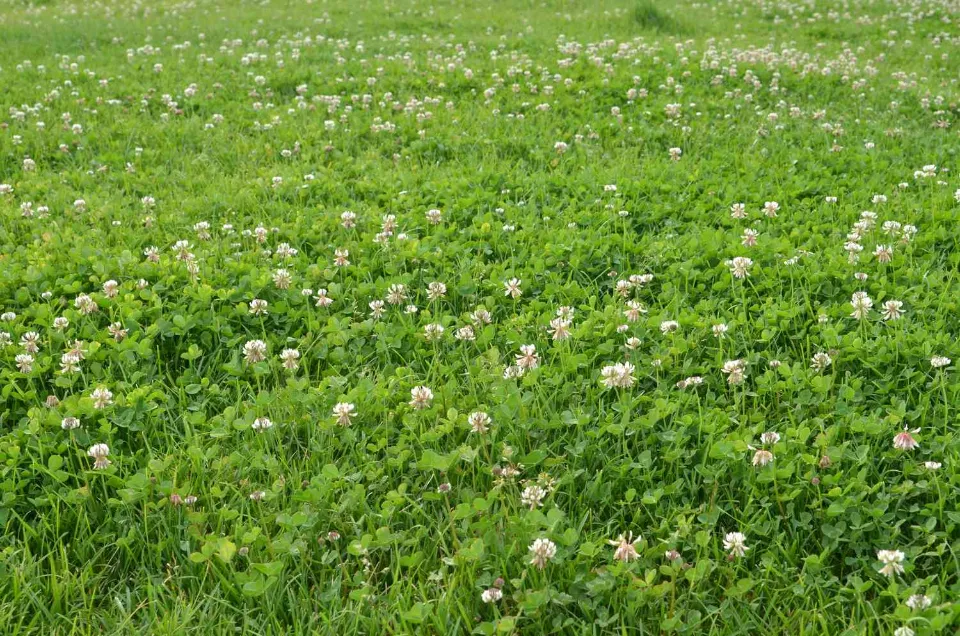
FAQs
How Long Do Clover Lawns Last?
A short-lived perennial, clover is. Unless the clover self-sows or spreads, a clover lawn will eventually dwindle and need to be replanted every two to three years, unlike a grassy lawn, which may last forever.
How Do I Turn My Lawn into Clover?
Either overseed an existing regular lawn, allowing the clover patches or new growth to self-seed and spread, or remove the grass and sow an all-clover yard.
How Long Does It Take for Clover Lawns to Grow?
It takes approximately a week for seeds to sprout, although clover seeds can germinate in just three days when conditions are optimal. A clover patch expands quickly. In a few weeks, given the right circumstances, the plants can completely colonize the seeded area and turn it into a lush lawn.
Do You Have to Replant Clover Every Year?
Clover is not an annual plant, so no, you do not need to replant it every year. It is a perennial that only lives for about three years before becoming sparse and needing to be replanted.
Is Clover Good for Your Lawn?
Clover is great for your lawn if you’re looking for low-maintenance alternatives to grass and don’t mind the untraditional look. When combined with conventional turfgrass, it benefits yards as well. Both times, the nitrogen-fixing bacteria raise the nitrogen content of the soil while the clover roots prevent compaction.
Summary: Why a Clover Lawn is Better Than a Grass Lawn
As we continuously discover more and more drawbacks of growing the labor-intensive American lawns and the constant use of fertilizers, broad-leaf weed killers, and synthetic pesticides, we should all strive to adopt more environmentally-conscious practices. Especially those homeowners going through periods of drought and under strict water usage.
Compared to turfgrass yards, clover lawns require much less upkeep and are a great environmentally friendly alternative to traditional lawns. Clover improves the soil, feeds the dwindling bee population, and requires very little water to grow, as opposed to degrading the soil, potentially harming the environment and aquatic habitats, and leading to habitat loss. You will still have a lovely lawn that is lush and green, so don’t worry!
If you’ve been thinking about switching to a lower maintenance, sustainable, attractive lawn, give a clover lawn a try! The advantages are incredible whether you start with a clover lawn from scratch or overseed your current lawn with a patch of clover.
If you have any questions, please leave a comment. My Prime Home tries to give you the best home improvement information. Don’t forget to share the post. Thank you for reading.
Related:
